|
Click on any illustration with colored border to see it full size. Then click on "Back" button to return to this page.
Gdansk, known also by the German name Danzig, has been Poland's main port on the Baltic Sea, since the 14th.century. It was an important member of the Hanseatic League that included Lubeck and Hamburg. In 1793 it was incorporated into Prussia, from 1919 to 1939 it was a Free City. The first shots of World War II were fired against the Polish fort Westerplatte at the mouth of the Vistula river. In 1945 it was severely damaged by the Soviet armies, but has been faithfully rebuilt to its ancient splendor. It is here too that the first struggles occurred that resulted in the overthrowing of the Communist regime in Poland.
|
Gdansk is perhaps best known for the ancient crane żuraw. Built in the 14thC it allowed weights of 2 tons to be lifted 26m. (90ft) by men walking the treadmills.
Most of the old city walls have been torn down and replaced by wide avenues. Some of the gates remain and these two bastions on the Granary Island that protected the old port.
|
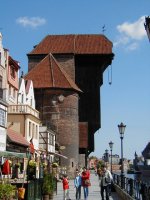
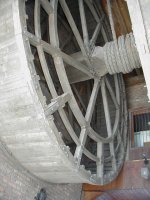
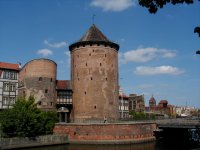
|
| The main street
of the Old Town is Długi Targ (Long Market), lined with houses of
the rich merchants. They are gorgeously decorated with wall paintings, carvings and statuary. The width of the house is an indication of the owner's
wealth. Taxes were paid by the number of windows.
|
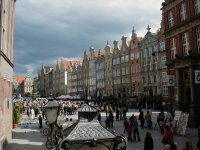
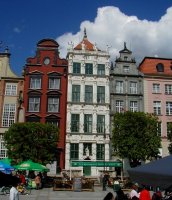
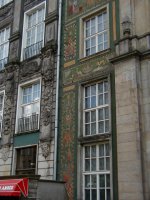 |
|
The Town Hall is the focal point of the Long Market. Built in the 14thC, it also served as the office of the Hanseatic League for many years.
Close by, the Neptune fountain is always a popular meeting place. Beyond the Town Hall the market becomes a narrower street which terminates at its western end in the Golden Gate.
|
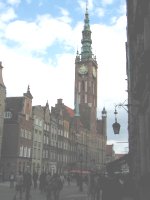
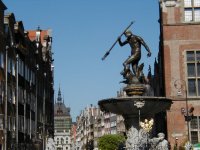
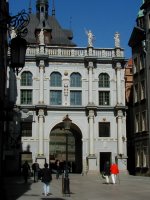
|
Another popular street that runs parallel to the Long Market is Mariacka (St.Mary's street) which is lined with jewelry shops, amber is Gdansk's specialty.
At the end of the street you can see the dark red mass of the Gothic St.Mary's Church, the largest brick church in Europe. The astronomical clock is the most interesting object inside.
|
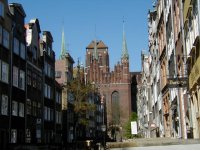
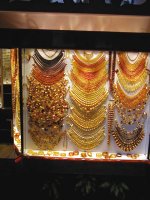
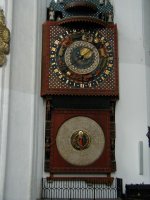 |
Some tourists miss the charming Raduna Canal area outside the original walls. In the distance you see the towers of St.Catherine's church which contains many rich Baroque altars.
The canal was dug in the 14thC to provide power to a number of mills, one of them the Great Mill.
|
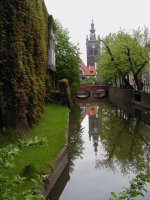
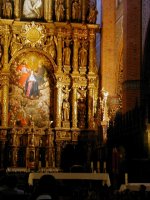
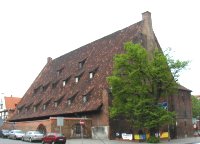 |
There are more great places to visit in close vicinity. One of them is Oliva with a large Cistercian Monastery and Cathedral. If you are lucky you will be in Gdansk for one of the concerts on the famous organ of the Cathedral.
Sopot has been a favorite sea resort for the last 150 years. The photo shows the Grand Hotel.
|
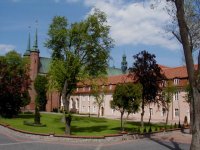
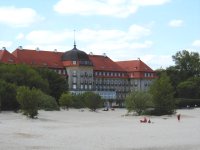 |
